Lend-Lease Tanks. Volumes and modifications
The tanks MK.P “Matilda II” and MK.III “Valentine I” sent in the USSR, in accordance with the British concept, belonged to the class of infantry and therefore were slow-moving, but well armored.
The British adopted the infantry tank Matilda I on the eve of the Second World War. This 27-tonnage machine was protected by 78-mm armor, which was not punched by any German tank or anti-tank gun (except for 88-mm anti-aircraft guns), and was armed with a 40-mm gun or 76-mm howitzer. The engine used was a pair of LES or Leyland diesel engines with a total power of 174 or 190 hp, which allowed the tank to reach speeds of up to 25 km / h.
A total of 1943 “Matilds” were released in the UK until August 2987, of which 1084 units were sent, and 916 arrived in the USSR (the rest died on the way).
MK.1P "Valentine" (according to the documents of the Red Army "Valentine" or "Valentine") was developed by the company Vikkers in 1938 year. Like the "Matilda", he belonged to infantry tanks, however, in terms of mass, the -16 t-was rather light. True, the thickness of the Valentine's armor was 60-65 mm, and the armament (depending on the version) consisted of 40-mm, 57-mm or 75-mm gun. On the “Wah-I-Ine” I used an ABS carburetor engine in the 135 hp, replaced on subsequent modifications with AES and GMC diesel engines with 131, 138 and 165 hp diesel engines. The maximum speed of the tank was 34 km / h.
"Valentine" was released from 1940 before the start of the 1945 goal in 11 modifications, differing mainly in weapons and engine type. Only three British and two Canadian firms manufactured 8275 tanks (6855 units in England and 1420 units in Canada). 2394 British and 1388 Canadian Valentine's (total 3782 pieces) were sent to the Soviet Union, of which 3332 machines reached Russia. In the USSR, Valentine's were delivered in seven modifications:
"Valentine II" - with 40-mm gun, AES diesel engine with horsepower 131. and optional external fuel tank;
"Valentine 111" - with a triple tower and a crew of four;
“Valentine IV” - “Valentine II” with GMC diesel in HP 138;
"Valentine V" - "Valentine III" with GMC diesel in HP 138;
"Valentine VII" - Canadian version of "Valentine IV" with a solid front body part and a paired 7,62-mm machine gun "Browning" (instead of the 7,92-mm machine gun BESA, installed on the "Valentine" English-made);
“Valentine IX” - “Valentine V” with an 57-mm cannon with a barrel in 42 caliber, mounted in a two-seat turret without a coaxial machine gun;
"Valentine X" - "Valentine IX" with a 57-mm gun with a barrel length in 50 calibers, paired with a machine gun, and the GMC engine power 165 hp
In addition to the main modifications of Valentine, in the 1944, the Red Army received MK.II1 Va-Lenin-Bridge Layer (Valcntine-Bridgelayer), in Soviet terminology MK.ZM.
Perhaps, the Canadian version of Valentine (modification VII) was even more reliable and technically better than its English predecessor.
Canadian Valentine's were shipped to the Red Army from 1942 to 1944, with the bulk of deliveries falling on the 1943 year.
One more vehicle with which supplies of allied weapons began in the USSR should be considered the English BTR Universal (in Soviet terminology MK.I Universal, or Y-1, or Bren). This lightweight tracked vehicle weighing about 3,5 was the most massive armored personnel carrier of the Second World War. From 1935 to 1945 in the UK, Canada, Australia, New Zealand and the USA, 89595 machines of this class were produced, of which 2008 (English and Canadian production) fell into the USSR. The Universal's armored personnel carrier had weapons from the Bren machine guns and the Boyes anti-tank gun, the thickness of the armor was 7-11 mm. The engine "Ford" 85 HP allowed the 3,5-ton car with a crew of two and three or four paratroopers to reach speeds of up to 50 km / h.
In the first year of the supply chain operation, the Red Army received the 361 tank MK.P Matilda and the MK.III Valentine and the 330 BTR Universal. True, of this amount, units were used in battles in 1941, so the role of British armored vehicles in battles near Moscow was more than modest.
It should be noted that the notation of the British armored vehicles was quite complex and cumbersome. First, the index assigned to the tank by the Ministry of War (MK.II, MK.Sh, MK.IV, etc.) was indicated, then the name of the vehicle (Valentine, Matilda, Churchill, etc.) and indicated its modification (in Roman numerals). Thus, the full designation of the tank could look like this: MK.Sh "Valentine IX", MK.IV "Churchill III", etc. To avoid confusion in this book, we will use the designations of the English tanks adopted in the Red Army during the war: the name indicating the modification, such as Valentine IV, Valentine IX, etc., or without specifying, for example MK.IV "Churchill", MK.Sh. "Valentine", MK.II "Matilda", etc.
In January, the 1942 of the USSR was supplied 20 from the 177 tanks MK.VII "Tetrarch" (the Soviet designation "Vickers VII" or MK. VII). They were light reconnaissance vehicles, weighing 7,6 t, armed with 40-mm cannon and 7,92-mm BESA machine gun and protected by Yu ... 16-mm armor. 165 - Meadows MAT's strong carburetor engine allowed the tank to reach speeds of 64 km / h. Most likely, the supply of this type of tank due to the interest in the results of its use on the Soviet-German front.
Since the summer of 1942, heavy British MK tanks began to flow into the Soviet Union in small batches. IV Churchill. They were produced in the UK from the summer of 1941 to the end of the Second World War in 16 modifications. In the USSR, there were only two that differed in the method of manufacturing the towers: Churchill III - with a welded turret and Churchill IV - with a cast turret (in Soviet documents these modifications did not differ at all, and all tanks were designated MK.IV, MK.IV " Churchill ", or simply" Churchill "). Protected 77 ... 175-mm armor 40-ton tank had a 350 - a powerful Bedford carburetor engine and developed speed to 25 km / h. Churchill's armament consisted of an 57-mm cannon and two BESA machine guns. Starting in the autumn of 1942, these vehicles were sent to complete the breakthrough heavy tank regiments. Of the 5640 issued and 344 sent to the USSR, only Churchill III and IV 253 fell.
From the beginning of 1942, the United States joined the organization of supplies under Lend-Lease, and they began to send in our country tanks of the MOH "General Stuart" (in Soviet terminology, MOH easy, or MZL) and MOH "General Lee" (in Soviet Terminology, MoH average, or MoH).
MZ "Stuart" was the most massive light tank of the Second World War. From 1941 to 1944, two American firms manufactured 13859 machines of three modifications. The USSR received modifications of the Ministry of Health and MZA1, which differed in the shape of the turret, the method of manufacturing the hull and the number of machine guns. These were 13-ton machines protected by 13 ... 45-mm armor and armed with a 37-mm cannon and three (on MZA1) - five (on MZ) 7,62-mm Browning machine guns. Carburetor engine Continental power 250 hp (or diesel Guiberson in 210 hp) accelerated tanks to 50 km / h. In 1942-1943 in the USSR 340 MZ and 1336 MZA 1 were sent, and 1232 of the tank (including 211 diesel) was hit.
MZ "Li", developed in 1941, was a rather archaic structure with a three-tier arrangement of weapons. Production of these three-meter monsters unfolded at the factories of five firms, where in 1941-1942, 6258 tanks of six modifications were produced, differing mainly in manufacturing technology and engine type. In the USSR, vehicles of a modification of the MOH, mass 29 t, which had 22-50 mm armor and weapons, consisting of 75-mm and 37-mm guns and three Browning machine guns, were mainly supplied. Star-shaped carburetor engine Continental R-975-EC2 XHUMX horsepower (or diesel Guiberson) accelerated this car to 340 km / h.
In 1942-1943, 1386 MZ tanks were sent from the USA to our country, and 976 vehicles were received that were actively used in 1942-1943 battles.
Also, judging by the Soviet documents, along with the first batches of the American Ministry of Defense tanks average in 1942, several of its “predecessors” got into the USSR - tanks М2А1 (Soviet designation М2 average). With a mass of 17,2 tons, the M2 tank was armed with an 37-mm cannon in the turret and six Browning 7,62-mm machine guns in the hull. The M2А1 had armor 32 mm thick, the HP 400 engine. allowed him to accelerate to 42 km / h. In the US, the entire 94 of such a tank was used, used in the US Army for training purposes only.
However, the M4 "General Sherman" of American production became the most massive foreign tank in the Red Army. The first vehicles arrived in the USSR at the end of 1942 of the year, but the peak of deliveries fell on 1944 the year when 2345 tanks М4А2 were sent to our country, which accounted for more than 2 / 3 of all deliveries of foreign armored vehicles this year. And just in the USA from February 1942 to August 1945, 49234 “Sherman” 13 modifications were made. In the USSR, the M4А2 (with 75-mm gun) and М4А2 (76) W modifications (with the 76-mm gun) were supplied with a GMC HP 375 diesel engine. The mass of tanks was (depending on weapons) 31-33 t, booking - 50 ... 100 mm, speed - up to 40 km / h.
During the war in the American enterprises it was produced 10960 M4A2 tanks, 4063 machines were sent to the Soviet Union (1990 from 75-mm gun, 2073 from 76-mm gun), and received military acceptance 3664 machines, misrepresented including a small amount of M4A2 76 (W ) HVSS with a new horizontal suspension in June 1945, who participated in the war with Japan.
In addition to the linear, the Red Army received 127 repair tanks M31 (the Soviet designation T-2), made on the basis of the MV of medium, which dismantled the main armament and installed crane equipment and a winch.
In the 1944, the 52 self-propelled artillery units M10 were received from the USA, which were aimed at the formation of two self-propelled artillery regiments. Built on the base of the M4А2 tank, the SAU had 25 ... 57 mm armor and was armed with a powerful 76,2-mm cannon in a rotating turret open at the top. GMC diesel with power 375 HP allowed self-propelled guns with a mass of 29,5 t to reach speeds of 48 km / h.
In addition to tanks, armored personnel carriers and various vehicles at their base arrived in the USSR from the USA in large quantities.
The American wheeled armored personnel carriers were represented in the Red Army by the White's MZA1 Scout Car (in Soviet documents it passes as an “armored personnel carrier, armored vehicle”, or “semi-armored vehicle” MZA1, or “Scout”). The Scout was well suited for intelligence purposes. With a weight of 5,6, the vehicle had armor thickness up to 12,7 mm and could carry 8 people (2 crew, 6 troops). The 110-strong carburetor engine allowed an armored personnel carrier to reach speeds of up to 105 km / h. Scout’s standard armament included 12,7-mm large-caliber and Browning 7,62-mm machine guns, not counting personal weapons the crew. In the Red Army, the Scout armored personnel carriers were used as part of reconnaissance companies of tank and mechanized brigades, corps motorcycle battalions and in separate regiments of tank armies. During the war years in the United States, 20894 Scout vehicles were built, of which 3034 fell into the armored and mechanized troops of the Red Army.
The American semi-tracked armored personnel carriers М2, МЗ, М9 were delivered to units subordinated to the GBTU in small quantities (total 118 units), since the bulk of these machines - 1082 pieces were sent to artillery (mainly anti-tank), where they were used for towing 76 ... 100-mm guns.
In tank formations, these armored personnel carriers, capable of transporting people from 10 to 13, were turned into command vehicles of brigades, corps, and armies. 16-mm armor, engine power 147 hp, allowing the car to reach speeds up to 72 km / h, and the presence of an awning allowed the headquarters or operational group of the mechanized connection to manage the fight with satisfactory comfort. The defensive armament of the M2 consisted of two Browning machine guns and was identical to the wheeled Scout.
On the basis of the semi-tracked armored personnel carriers of the М2-М9 family, various self-propelled guns were also manufactured that were also delivered to our country.
The T-48 ACS (the Soviet designation SU-57) were the 57-mm cannon installed in the combat compartment of the US MZ semi-tracked armored personnel carrier. Initially, an order for this design was issued by the UK, but then, due to the relative weakness of the weapons and the uncertainty with tactical use, some of the vehicles were transferred to the USSR. SU-57 in the number of 650 units entered service with light self-propelled artillery brigades (sabr), as well as sub-divisional and co-operative - into separate armored reconnaissance companies and motorcycle battalions (regiments).
The anti-aircraft gun М15 was a half-tracked MZ BTR with a combined machine gun and cannon armament mounted on it consisting of an 37-mm gun М1А2 and two Browning М2 machine guns in 12, 7 mm. This formidable weapon, capable of destroying not only low-flying aerial, but also lightly armored targets, was supplied to the USSR in insignificant quantities. Of the 2332 ZNU M15, released in the USA, the total number of 100 vehicles was in the Red Army tank units.
The M17 anti-aircraft SU was armed with four 12,7mm Browning M2 machine guns in aviation a rotating installation mounted on the basis of the BTR M5. All 1000 Ml7 anti-aircraft guns manufactured in the USA were delivered to the Soviet Union.
All of the United States supplied ZSU used in the mechanized and tank forces of the Red Army. They, along with the Soviet towed guns, manned individual anti-aircraft regiments, battalions and companies of corps and tank armies. For example, the 7 th Guards Tank Corps as of January 1945 included the 287 th anti-aircraft artillery regiment as part of the 16 37-mm anti-aircraft guns and ten ZNU М17.
The 13-ton heavy armored M5 tractor stands out among the lend-leased armored vehicles. Built on the basis of the chassis of a light tank MZ "General Stewart", the tractor had a Continental R6572 engine with a power 235 hp. and was able to tow implements in caliber up to 155 mm while simultaneously transporting a 8-9 man at a speed of 56 km / h. The cabin was open, with a canvas roof. The driver and the calculation of the guns were located in front of the car. From 5290 machines manufactured by International Harvester in the USSR in 1944-1945 there were 200 М5, which were sent exclusively to the artillery units of the RGK, where they were used to tow 122 and 152-mm cannon.
In addition to military vehicles, various repair and evacuation vehicles were supplied to the Red Army during the entire period of the war. Along with the already mentioned repair-evacuation tank М31, the Red Army received the English Scammel wheeled towers in two versions and the American cars RE028XS, Diamond T-980.
The Scammel heavy emergency tractor was designed for the English army in the towing tank (Scammell TRMU / 30) and evacuation vehicle (Scammell PIONEER SV / 2S) variants. 102 hp diesel Gardner GL allowed using a trailer to haul cargo up to 30 t on hard-surface roads. However, during the fighting in North Africa, Scammel TRMU / 30 carried even 42-tons Churchill to the front line. At the evacuation PIONEER SV / 2S was installed a powerful crane winch for repair work.
Scammel shipments to our country began in 1942 and were extremely limited. However, in the UK for the entire period of the war 548 Scammell TRMU / 30 and 768 Scammell SV / 2S were released, so a few dozen of these tractors, delivered to the Red Army, were an impressive figure compared to the total production. Prior to the start of massive American deliveries, these vehicles were literally distributed on fronts by the piece. So, on the Leningrad front, in submission to the front there was only one Scammell tractor (the rest of the equipment was Soviet-made), etc.
The American REO conveyor with a special trailer was intended for the transportation of tanks and ACS weighing up to 20 tons on paved roads and on dry dirt roads. The design of the trailer made it possible to load and unload the equipment under its own power; during transportation of faulty tanks, the loading onto the trailer was done with a winch. Conveyor RE028XS had a six-lipdrovy diesel Cummings HB-600 water cooling power 150 hp For the safety of transporting tanks and self-propelled guns there was a set of fasteners (chains, pads, stretch marks, etc.). During 1943-1944, the Red Army received 190 of such vehicles, however, due to the general tendency to increase the weight of the tanks, a tractor was needed that could haul heavier vehicles. They became the new American ballast tractor Diamond T-980. The transporter consisted of a three-axle 8-ton tractor and a three-axle 45-ton wheeled trailer Roger Trailer. It could be used to transport goods weighing up to 45 tons on dry dirt roads and paved roads. The Diamond T-980 transporter was equipped with a powerful engine-driven winch for easy unloading and loading of tanks. In addition, the design of the trailer made it possible to load serviceable tanks under its own power. The power of the Hercules DFXE engine reached 200 hp, which ensured the transportation of cargo on a trailer at a speed of 26 km / h. From 1943 to 1945, X-NUMX Diamond T-295-type trucks were produced. These machines were made available to the evacuation of fronts and armies. Thus, the 980-th Evacuation was in the 1-th Guards Tank Army, in which, apart from the “Voroshilovtsev” and the “Cominterns”, 67 T-1945 was listed as 2 in January. Usually, no more than two cars were allocated to the army's evacuation facilities. On 980 of the year, to ensure the evacuation of armored vehicles of units and formations prepared for striking the Japanese troops in Manchuria, the 5.08.1945 armored repair and recovery center was created, from which mixed evacogroups were allocated for army needs. The 1 th Red Banner Army received an 1 T-3 Diamond-based T-34 and 2 T-980 Diamond-based 5 Diamond. Towards the end of the war, the reports of the repair and evacuation services were filled with proposals to increase the number of tractor trucks to 6-34 units per army.
In the Red Army, wheeled tractors with tank trailers to the front line were used extremely rarely. Due to their relative small size and the presence of winches, the Scammell, REO, Diamond haul trucks were primarily needed for the operational evacuation of heavy armored vehicles, especially from areas with marshland.
Since the end of 1943, the American and Canadian automotive repair shops began to flow in large numbers in the Soviet Union.
A full fleet of American workshops consisted of up to ten different repair units and, in essence, was a field tank repair plant. It consisted of the following machines:
1. Mechanical workshop МХNUMXА (on Studebacker US-16 chassis).
2. Mechanical workshop МХNUMXВ (on the chassis US-16).
3. Mechanical workshop МХNUMXА (on US-8 chassis).
4. Forge-welding workshop M12 (on the chassis US-6).
5. Electrical repair workshop M18 (on the chassis US-6).
6. The workshop for the repair of weapons M7 (on the chassis US-6).
7. Tool workshop (on StudebekkerUS-6 chassis).
8. Warehouse machines M14 (on the chassis of US-6).
9. 10-ton crane Ml or M1A1 (on the chassis WARD LaFRANCE 1000 М1А1, less often on the chassis KENWORTH 570 Ml).
10. Repair tank M31 (T-2).
The full fleet of Canadian workshops was smaller than the American one and consisted of the following cars:
1 A3 Mechanical Workshop (on GMC - American-made 353).
2. Mechanical workshop D3 (on American-made GMC-353 chassis).
3. Mobile OFP-3 charging station (CCD) (Canadian-made Ford C298QF / F60L chassis).
4. Electric welding workshop KL-3 (on Ford F15A chassis of Canadian production).
5. Electrical repair workshop (on GMC chassis - American-made 353).
6. The power plant on 9 KW on a trailer.
American and Canadian parks staffed mainly military and front-line repair units (mobile tank repair plants, separate repair and restoration battalions, etc.). This allowed not only medium, but also major repairs of armored vehicles, while Soviet equipment of this type was designed primarily for maintenance.
In the USSR, a separate forge-welding workshop was also supplied (on the American GMC Chevrolet 7107 chassis or Canadian Chevrolet production), which was used to supply repair units directly to tank units. For 1944-1945 in the USSR from Canada, 1590 was set up for all types of repair shops all over the years (the authors do not have data on the number of American workshops).
Thus, for the entire period of the war, the USSR received not only combat vehicles and spare parts for them, but also modern repair equipment of foreign production, which ensured the entire cycle of competent operation of the Red Army tank fleet of both domestic and foreign production.
In conclusion, it should be noted that one of the problems in estimating the volume of supplies under a lend-lease is the counting system. In the majority of domestic and foreign works devoted to this topic, the authors operate on western data that exceed the Soviet ones in the hundreds of units on 3-4. This is due, firstly, to the loss of part of the tanks during transportation by the Northern convoys (especially in 1942-1943), and secondly, that the applications of the Soviet Union for a particular type of equipment were often taken as dispatch data. Therefore, different authors have completely different quantitative data.
In addition, most of the domestic archival materials relating to Lend-Lease are still not available to most researchers. Therefore, it is not yet possible to estimate the actual volumes of supplies.
The tables given here are compiled according to the admissions committees of the Red Army headquarters and presented to the authors as closest to the truth (table 3, 4 and 5).
3 table. Supplies in the USSR of armored vehicles from the UK and Canada from 1941 to 1945 (according to the admissions committees of the GBTU KA)
1 Of these, 27 is from Canada. Of these, all are 16 from Canada.
2 From 1943 to 1945 in the USSR, the British Cromwell cruiser tanks (six), converted into Sherman mine trawls under the name Sherman Crab (three pieces), Churchill-Crocodile flame throwers were supplied from the UK for informational purposes. "(Five pieces), AES and Daimler armored vehicles (one copy each), a Universal-made BTR firearm variant Osa, and Bombardier Canadian snowmobiles (six pieces).
4 table. Supplies in the USSR of armored vehicles from the USA from 1941 to 1945 years (according to the admissions committees of the GBTU KA)
3 In 1943, from the bottom of the Arctic Ocean, 12 MZs tanks from the number of deliveries for 1942 a year were lifted from the side of the Karelian Front from the bottom of the sunken transport. After the incorporation of 11 MZs into the units of the Karelian Front, the number of tanks of this type delivered to the USSR for the 1943 year began to be 175 units.
2 In 1942, under the MZ label, the average in the USSR was delivered several American medium tanks M2A1.
3 3Here data are given only for the armored personnel carrier, received by the GBTU KA. In addition, from 1942 to 1945, the 1082 year of the M2, MZ, and M9 armored personnel carrier was transferred to the Main Artillery Directorate for use as artillery tractors. Thus, the total number of semi-tracked armored personnel carriers, supplied under Lend-Lease to the Soviet Union, is 1200 units.
For testing and familiarization in 1943-1945 from the USA one heavy tank 26 “General Pershing” five light tanks М5, two light tanks М24 “General Chaffee” and five SAU T-70 were sent to the USSR.
5 table. Shipments to the USSR of wheeled tank transporters from the USA to 1941-1945 (according to the admissions committees of the headquarters
- Lend-Lease Tanks Magazine
- Lend-Lease Tanks. Agreements and supply lines for BTT
Lend-Lease Tanks. Volumes and modifications
Lend-Lease Tanks. Preparation, completing and staffing structure of parts
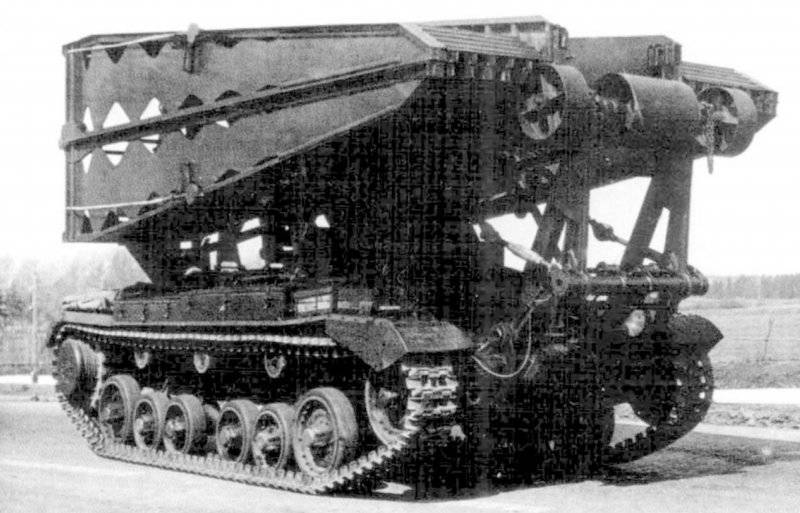
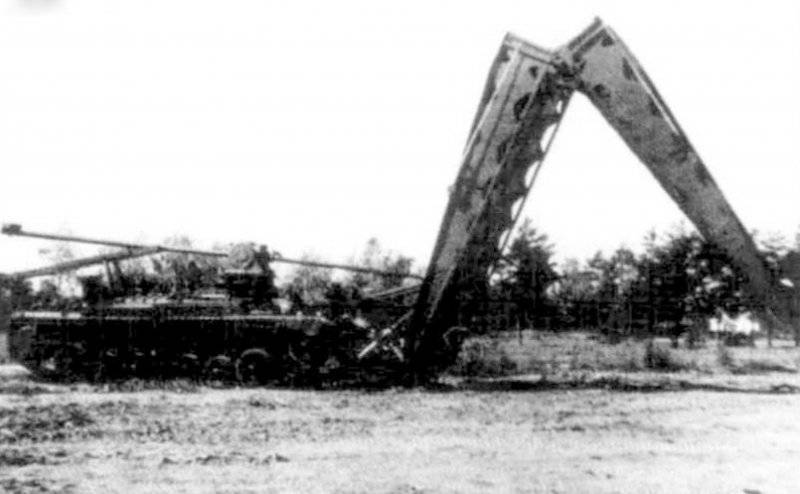
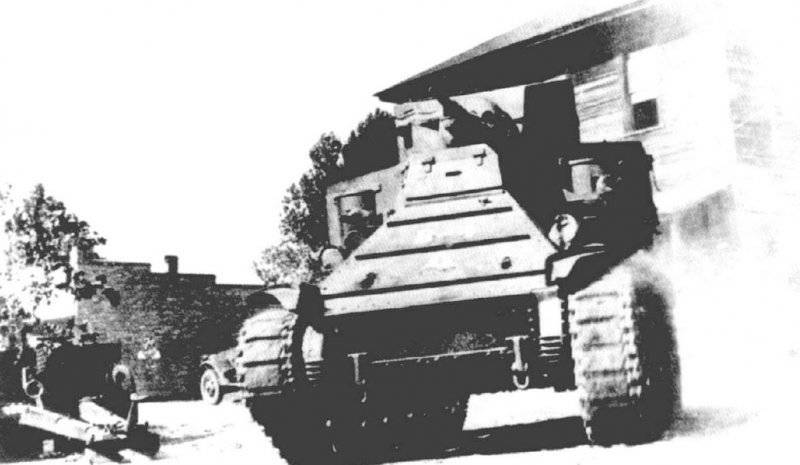
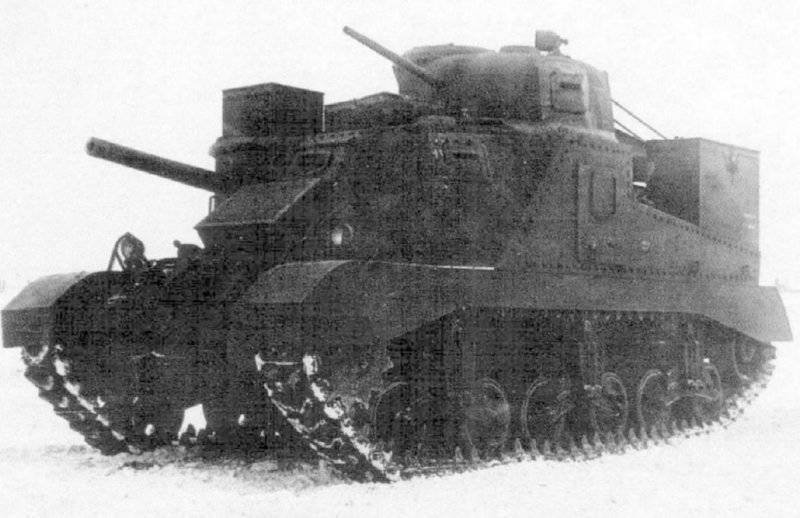
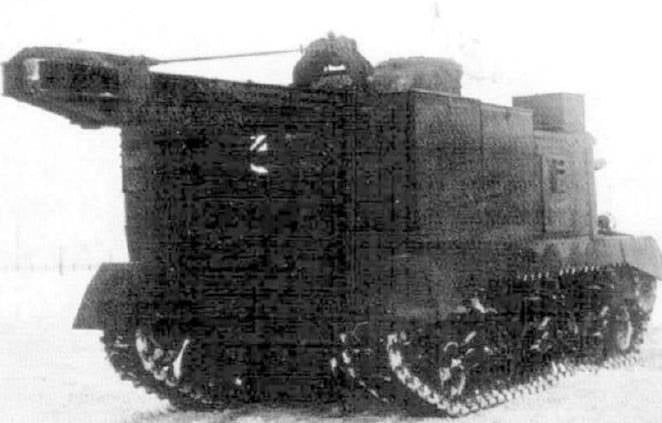

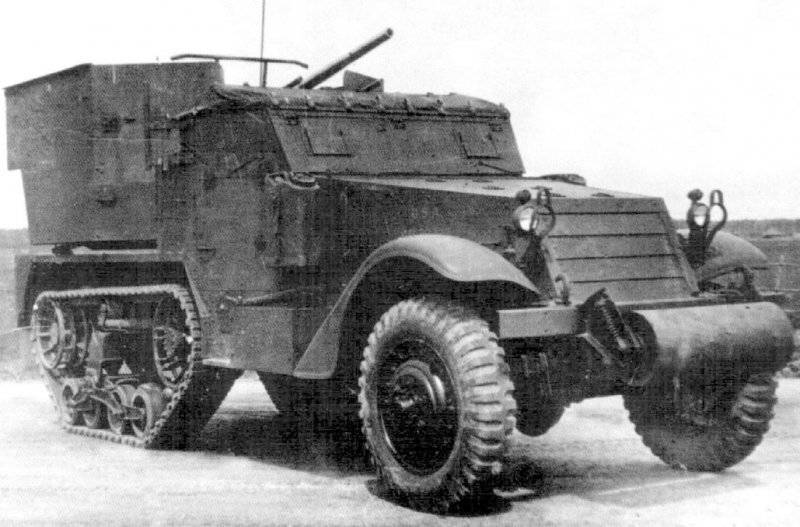



Information